Vorm volgt functie
VRIJDAG
12:00PM
It seems hard to believe that the citizens of Switzerland were suffering from traffic noise as early as the 1950s. Yet this was the advent of mass motorization, and traffic codes were still in their infancy. In 1952, commissioned by the Automobile Club of Switzerland (ACS), Josef Müller-Brockmann was already calling attention to the growing number of casualties caused by traffic accidents. The same year, he won the ACS-organized poster competition “Schützt das Kind!” (“Protect Children!”) and produced his first poster using photomontage techniques. This was the start of his longtime collaboration with the ACS and various other safety commissions on the subject of accident prevention, as well as the beginning of his commitment to photography. From that time on, he always collaborated with photographers: first with Ernst A. Heiniger (1909–1993), who contributed the image of the speeding motorcycle to “Schützt das Kind!,” and later with Serge Libiszweski (b. 1930), René Burri (1933–2014), Peter Huber (1936–2005), and other graduates of the Zurich photography course. Which of these photographers produced the image of the car racing head-on toward the viewer in Müller-Brockmann’s
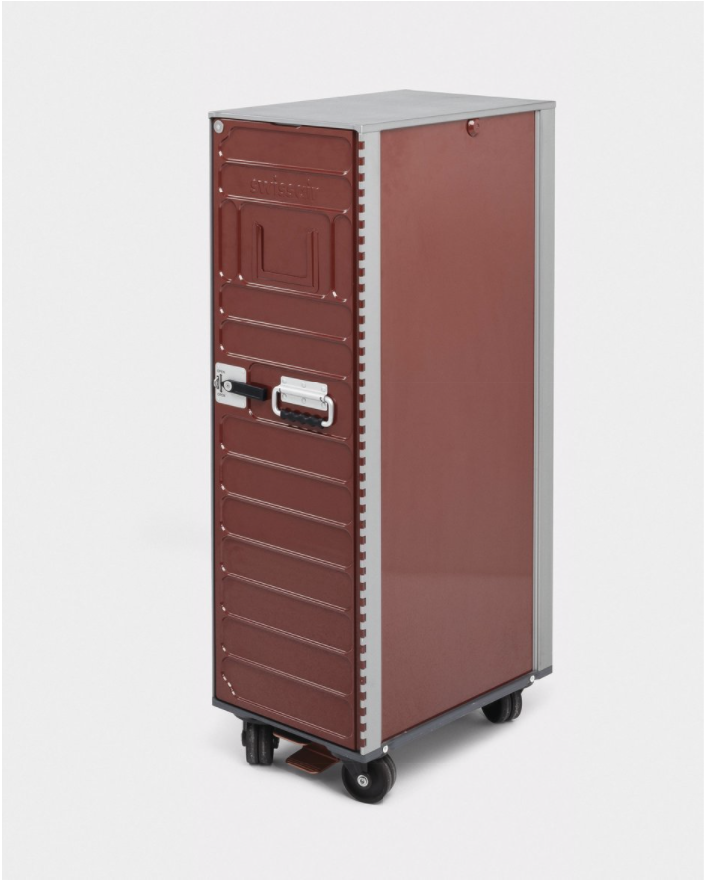
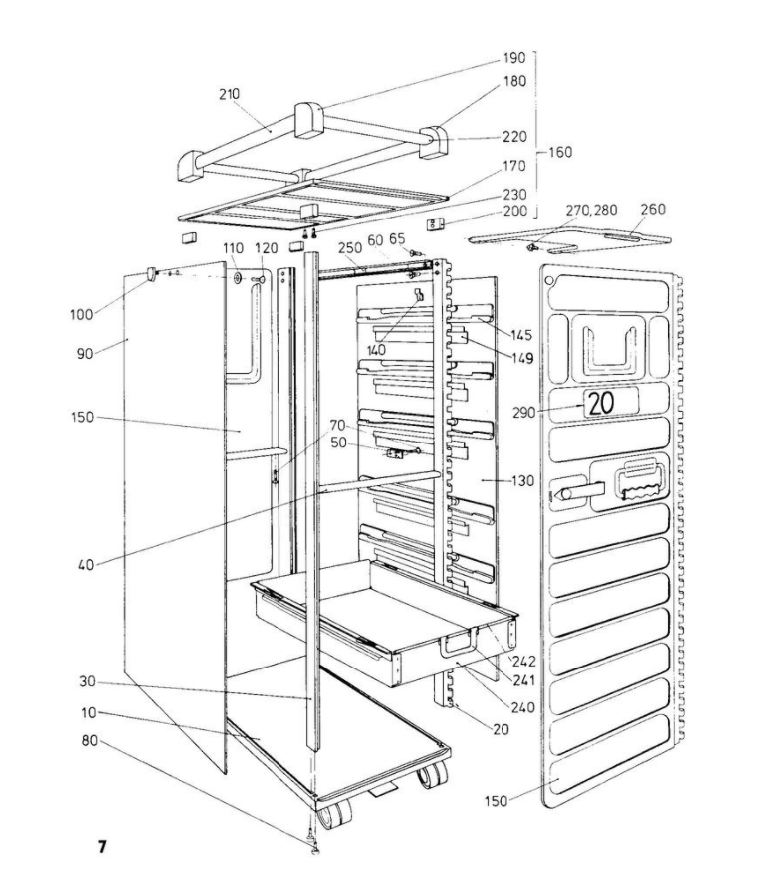
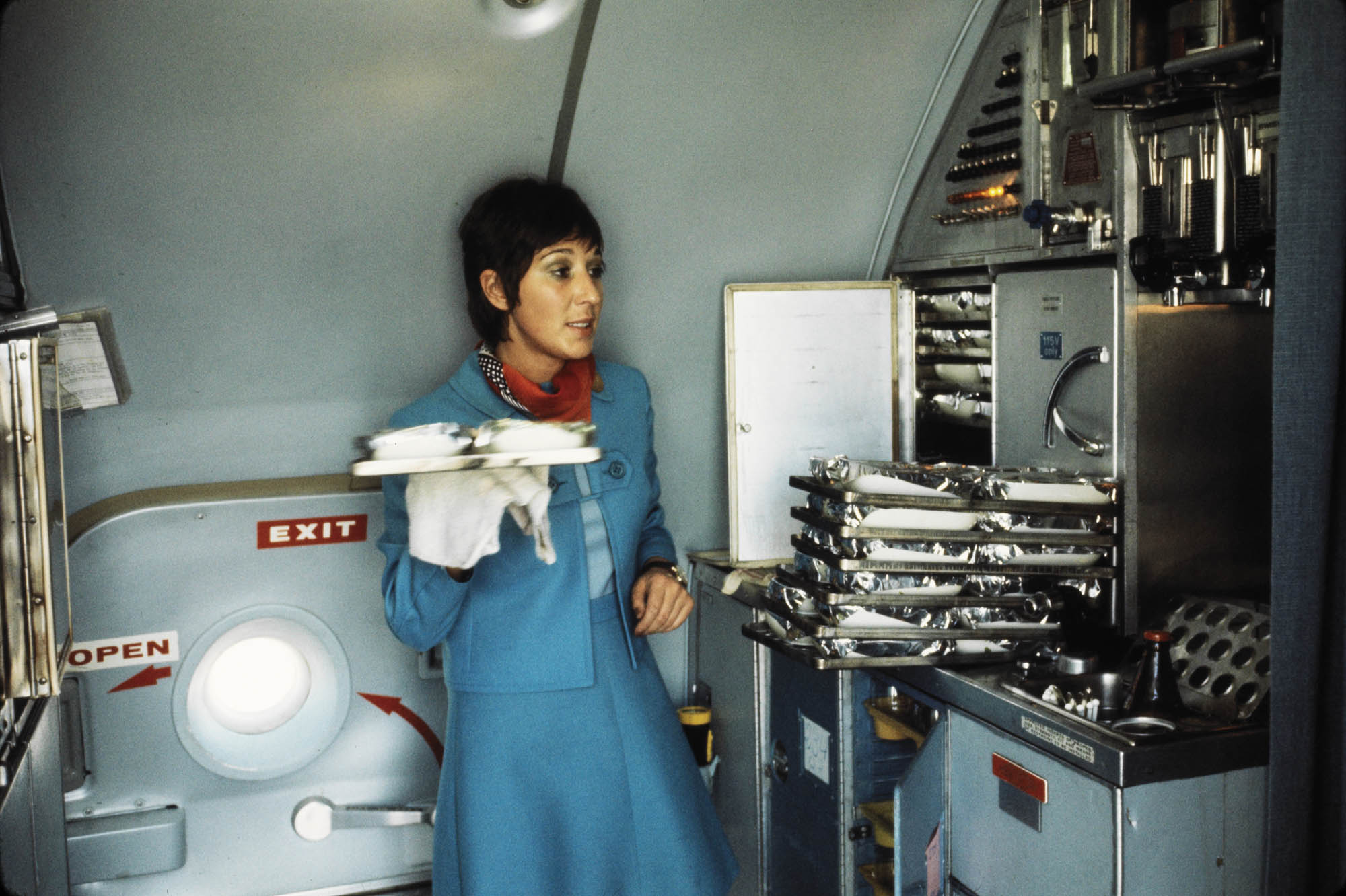
A kitchen onboard an airplane must be above all one thing—lightweight. In the 1970s, Heinrich Bucher (1918–1992) developed a new construction technique for the service carts. The exterior walls are composed of milled aluminum panels, which makes the “trolleys” especially stable and durable. The color and logo can be adapted to fit the airline’s corporate identity.
Heinrich Bucher, a trained sheet metal specialist, began working in Swissair’s repair service in 1943. One of his responsibilities was to overhaul the onboard kitchens—so-called galleys, which store the packaged food prepared on ground, keeping it at the correct temperature. Like all airplane installations, they need to be as lightweight as possible while still withstanding heavy use as well as the forces of deceleration and acceleration. Bucher drew on his experience to begin independently manufacturing his own onboard kitchens in 1953, developing a new series of “trolleys” in 1973–74 that could be used as service carts, waste containers, or to sell duty-free products.
Like the standard models of the time, these trolleys were modular aggregates that could be fitted and replaced without the use of any special tools, and also took into account the ergonomic aspects of the airplane cabin as workplace. What was new, however, was that he used “monocoque” construction, which draws its stability from the skin itself, in this case solid aluminum panels, rather than from welded, pressed, or cast elements. These “integral structures” minimize the amount of material used, reducing the trolley’s overall weight while still guaranteeing a high level of sturdiness. Thanks to the CNC process, they can be easily adjusted to customer specifications. The corrosion-proof panels are powder-coated in the respective corporate color. These trolleys have a life span of ten to fifteen years, and although they are more expensive than rival products, their maintenance costs are lower. (Renate Menzi)
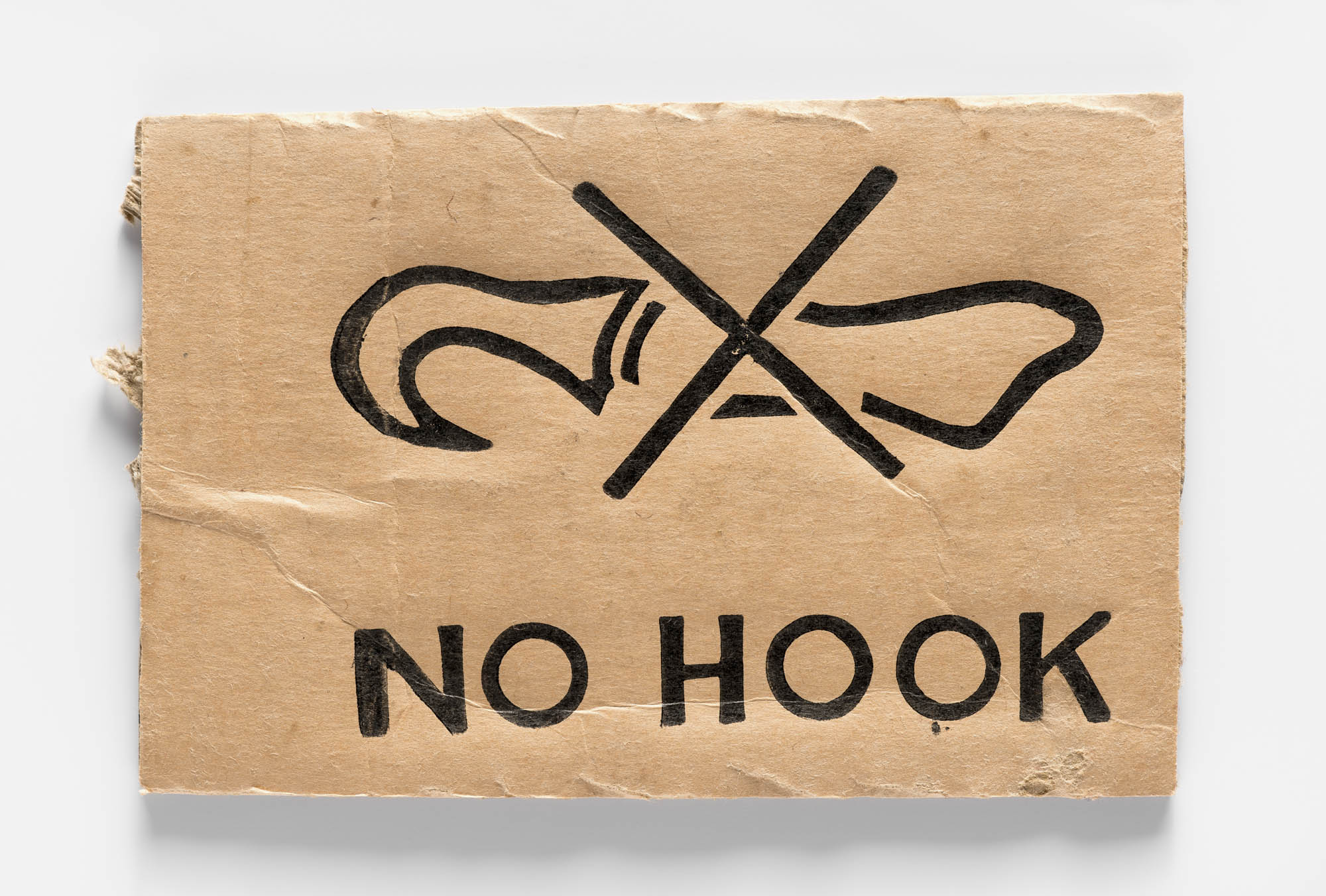
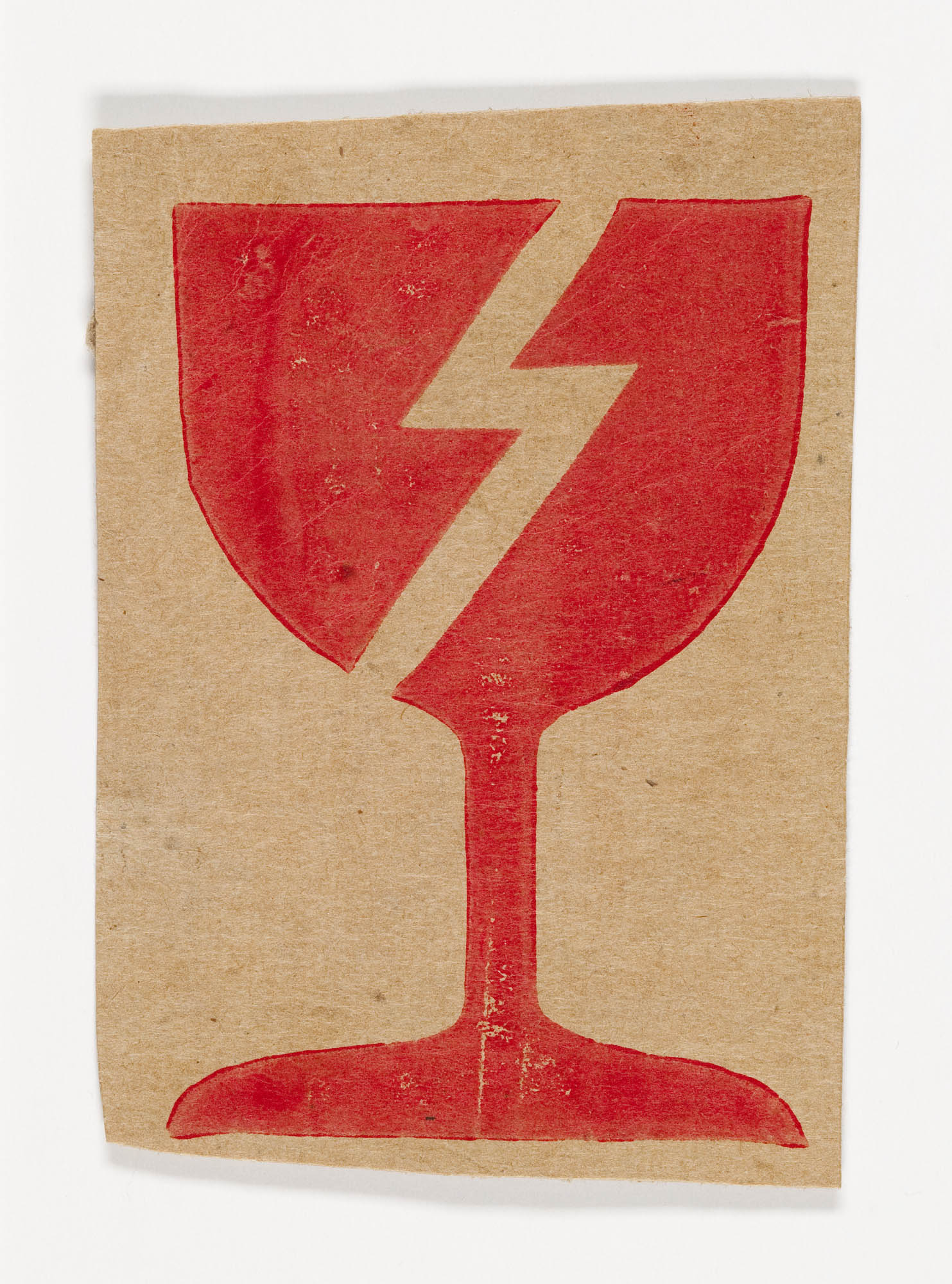
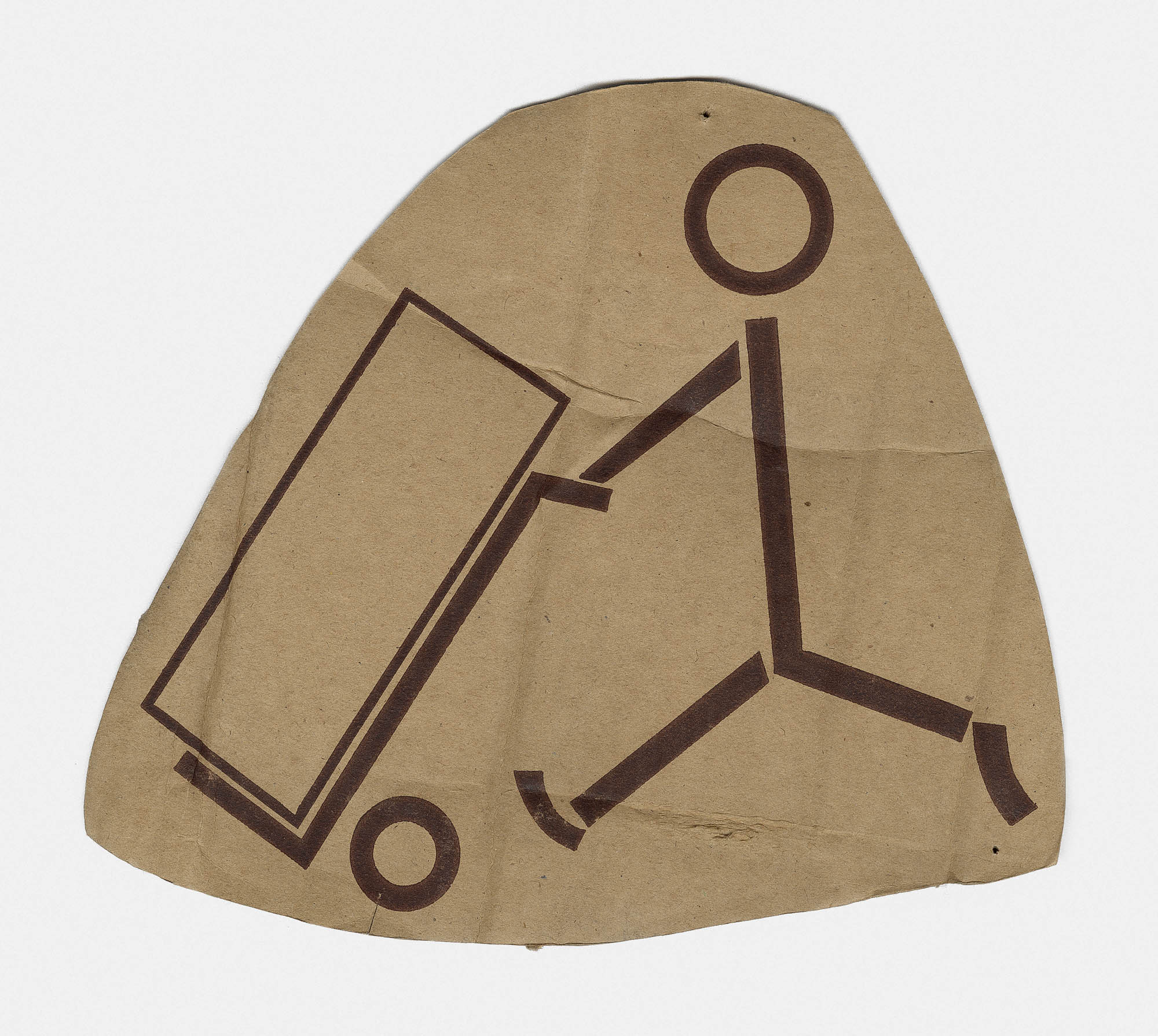
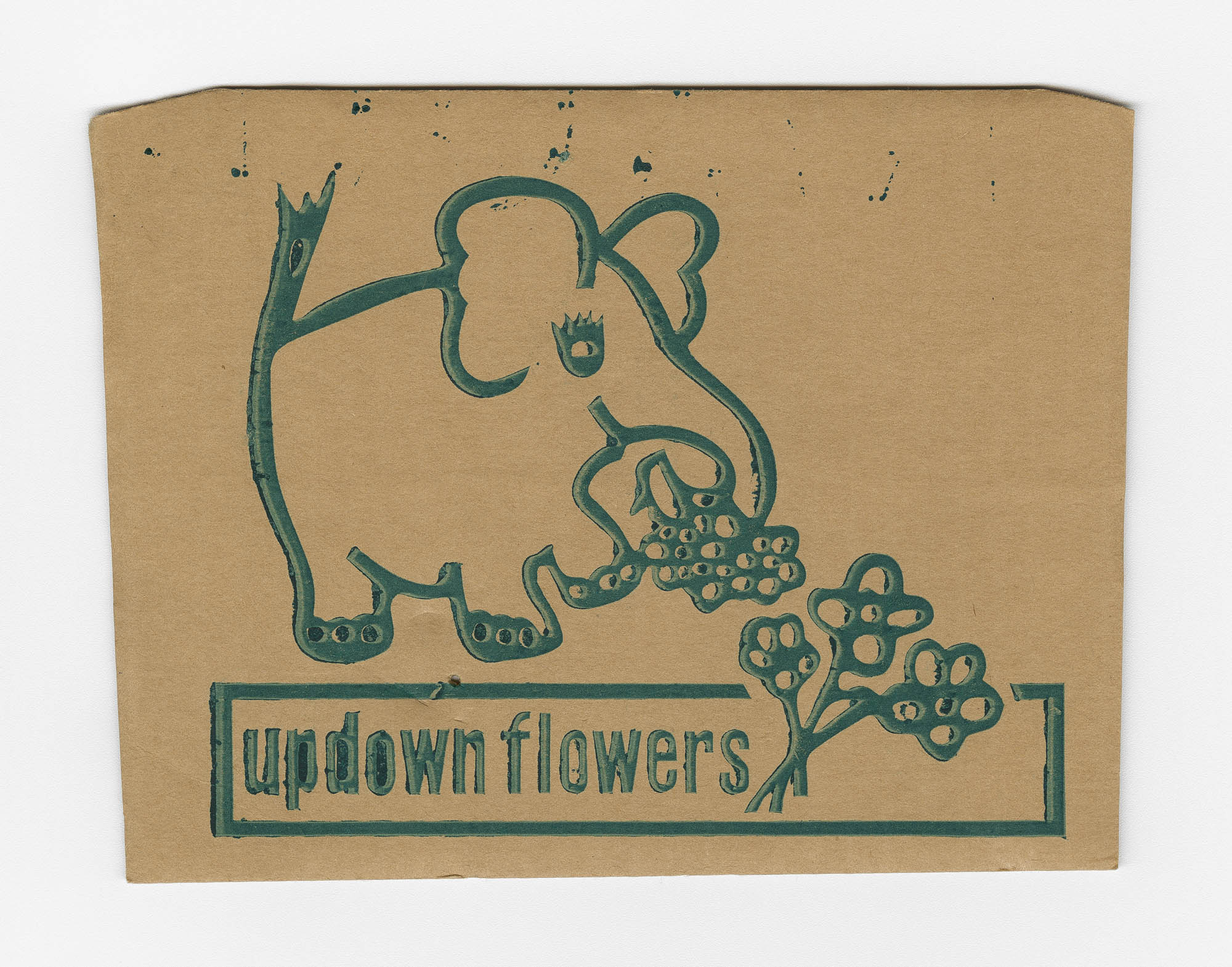
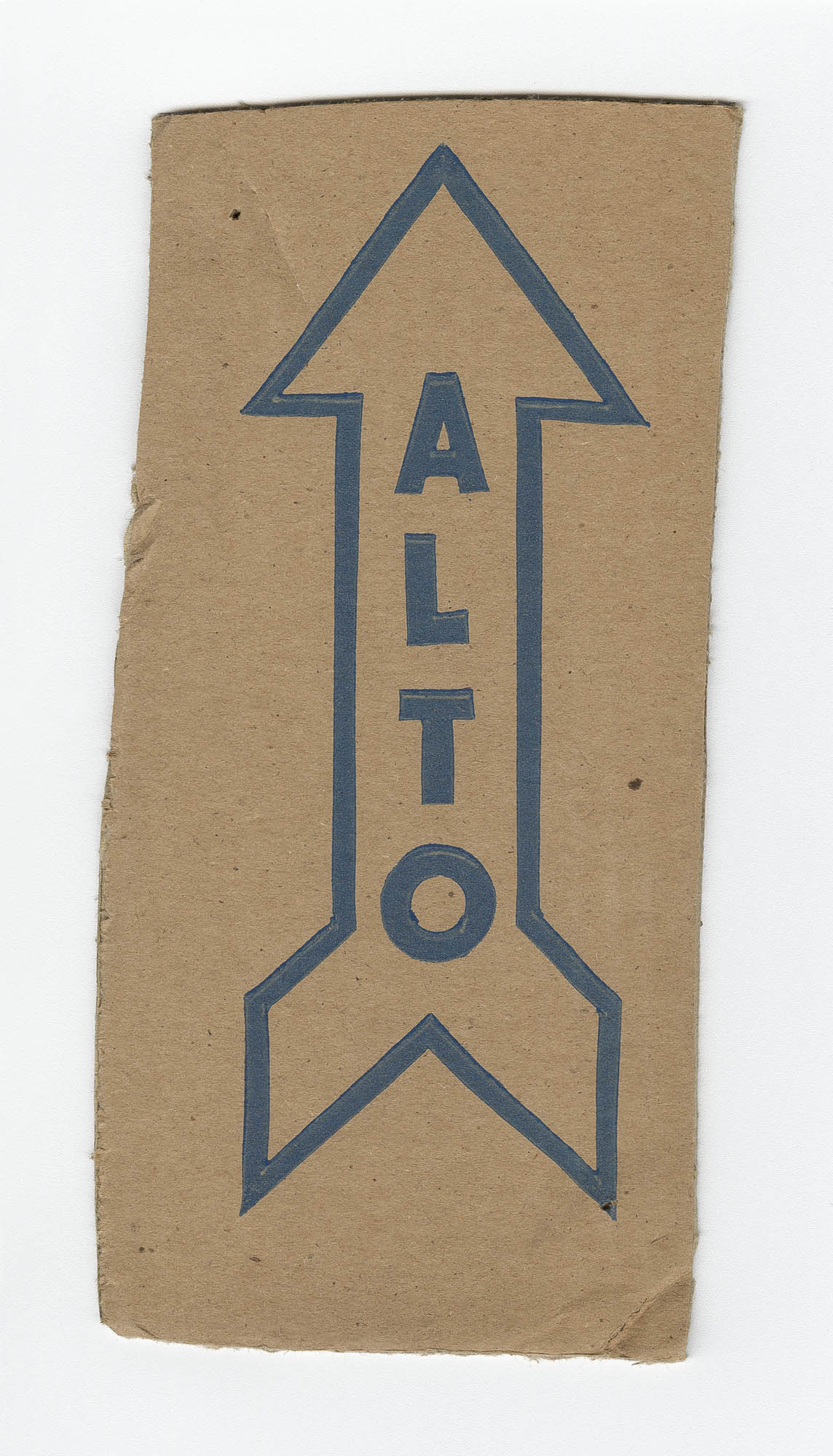
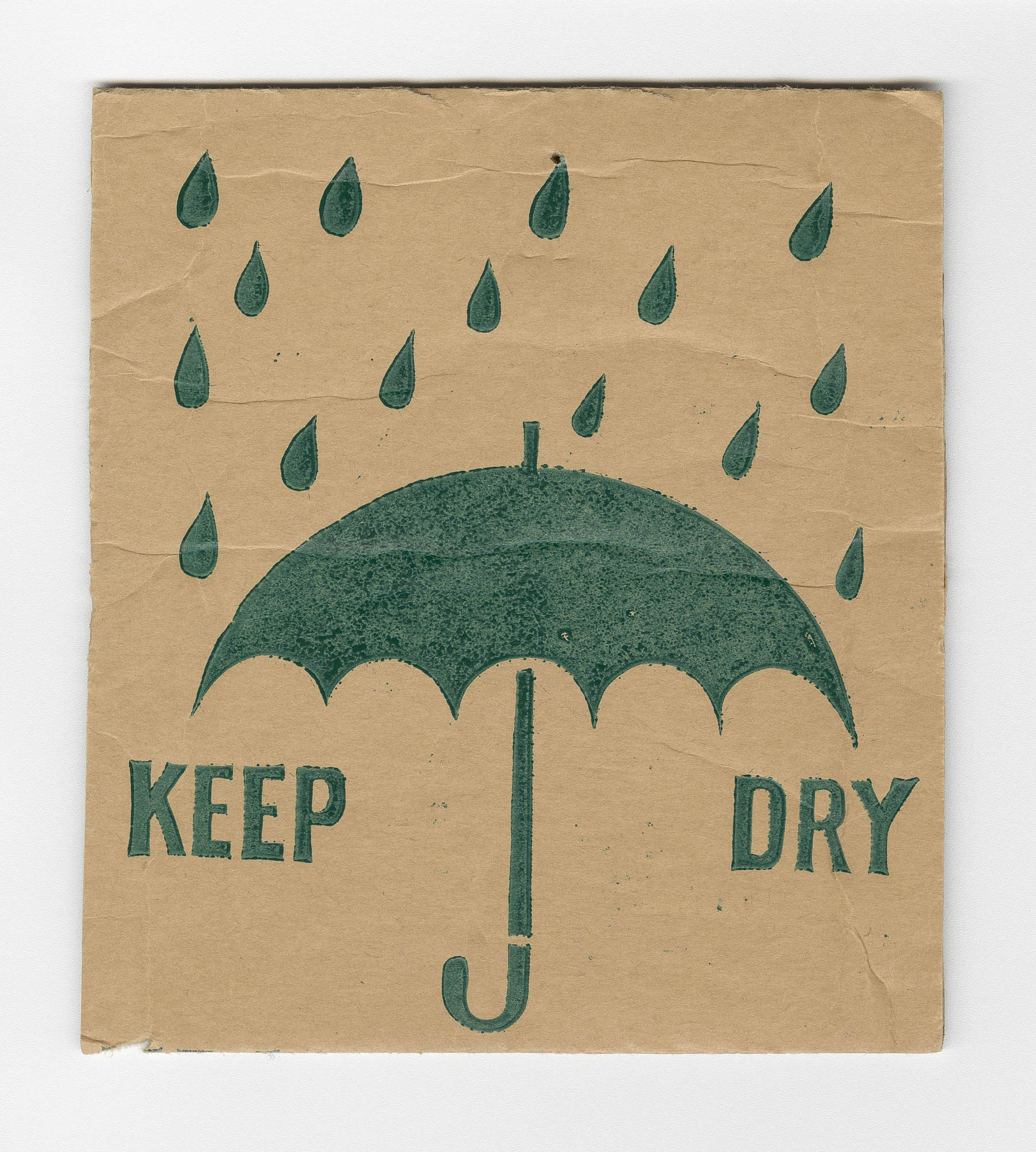
In the years between 1975 and 1990, the visual designer Hans-Rudolf Lutz (1939–1998) collected about 15,000 pictograms on transport packaging from around the world. He was fascinated with their international comprehensibility, which was combined with aesthetic sensuality, innovative ingenuity, and formal reduction. The “hieroglyphics of today,” as he called them, were largely created by craftspeople in the corrugated cardboard industry.
For fifteen years, Hans-Rudolf Lutz collected the pictograms on transport packaging from around the world. They consist of instructions for transportation, company or brand logos, and pictures of either the products themselves or their use or consumption. Lutz initially became aware of the pictograms in 1975, when he worked as a visiting lecturer in Edmonton, Canada. He discovered the quaint symbols on some cardboard boxes put out for garbage collection, and cut them out and saved them. Soon his pastime developed into an obsession: wherever he was, he rummaged through piles of garbage, in the end unearthing a total of 15,000 of these “visual treasures.” In 1990, he self-published a third of them in his book
Op de pagina van eMuseum heb je ook een pagina die heet eGuide waarbij er is een selectie van werken met een kleine uitleg. Toen ik terug ging kijken naar mijn eigen pagina, merkte ik dat alles wat ik heb verzameld heeft een sterk relatie met regel: Vorm volgt Functie.
Dus bij de artikels ging ik kijken welke gerelateerd is aan vorm volgt functie.
SEMINAR - MY MEMORY EXTENDER
PAGE C/O VALENTINO ANGELA
DAY 1
DAY 2
DAY 3
DAY 4
DAY 5
HOME